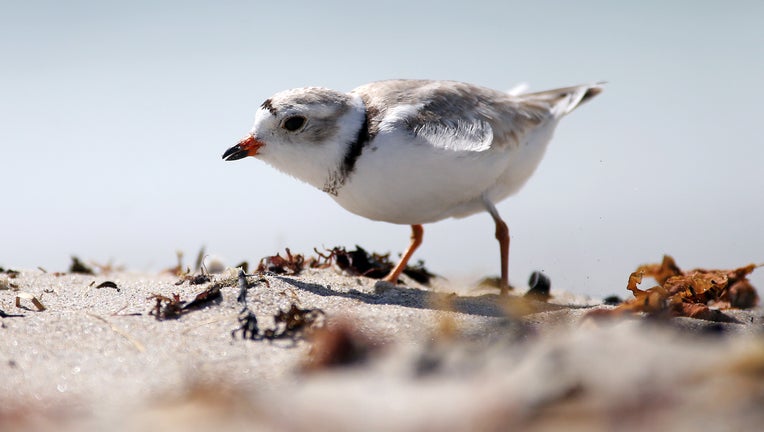First piping plover returns to Great Lakes for nesting season

WELLS, ME - MAY 23: A piping plover forages on Wells Beach on Saturday. There are a record number of the endangered shorebirds nesting in Maine this year. Wells Beach has nine nests, with seven of those active. The Wells jetty path to the beach is cl
GLEN HAVEN, Mich. (FOX 2) - Great Lakes piping plovers are returning to their nesting home along Lake Michigan right on schedule.
Nicknamed bLO, the appearance of the 6-year-old bird marks the beginning of what's expected to be a busy plover season. She was spotted near her summer home in Glen Haven on April 8, according to the conservation group that monitors the native shorebird that migrates to the great lakes.
It's rare for a female to be the first bird to return and last year it was bLO's mate that was the first to come back to its nest. The earliest anyone has spotted a plover on the Great Lakes was April 7.
For the Great Lakes Piping Plover Recovery Effort, spying these birds on the shoreline always comes with added joy due to the rebound the species has seen over the past several years. After being listed as federally endangered in 1986, conservation efforts have worked to bring their numbers back up.
Historically, between 500-800 Piping Plover pairs nest along the Great Lakes. Those figures had dwindled to just a dozen pairs in 1990. The numbers have since climbed back up to 75 nests in 2015. High water levels have presented challenges to the species since then and their numbers have dipped slightly.
Last year, the GLPIPL team reported a record-breaking season for number of chicks that had fledged going back to 1984. In 2022, more than 140 chicks fledged which came out to 1.93 chicks per nest - well above the norm.
That could mean good news for the next season of breeding as recovery efforts continue.
The return of bLO means more birds are on the way - including YOGi, who the conservation effort labels "super dad." According to the plover monitors in Georgia that await the birds at the end of their fall migration, he left his nest last week.
"We believe YOGI often arrives in early to mid April to his preferred nesting territory," the conservation group said on Facebook.
For anyone venturing up to Sleeping Bear Dunes over the next couple of weeks, a pair of binoculars would be handy in case any other plovers return. The conservation group is always accepting updates on their favorite birds.
Learn more about the Great Lakes Piping Plovers here.

